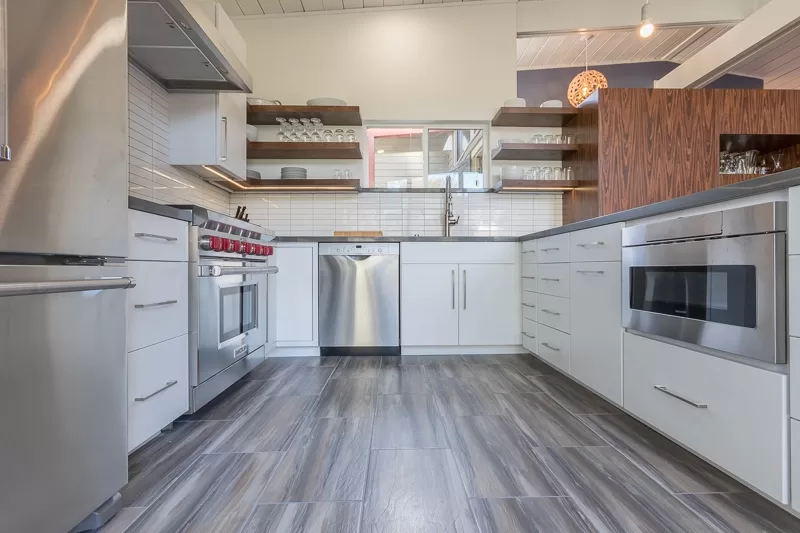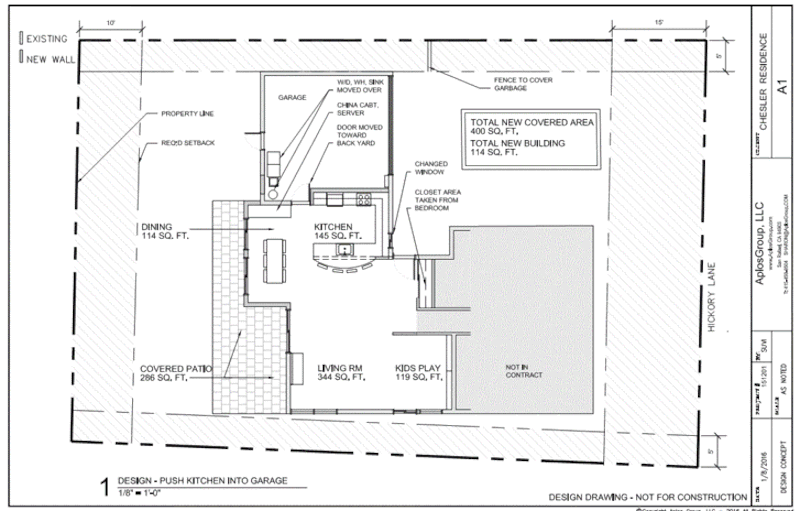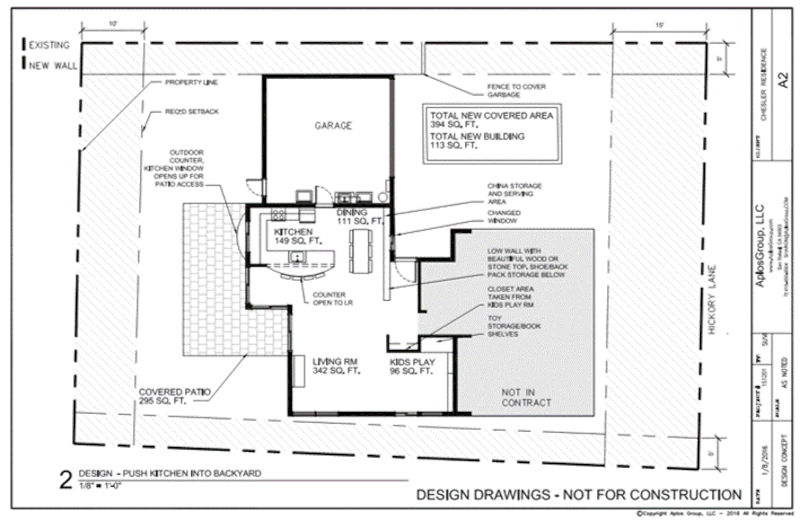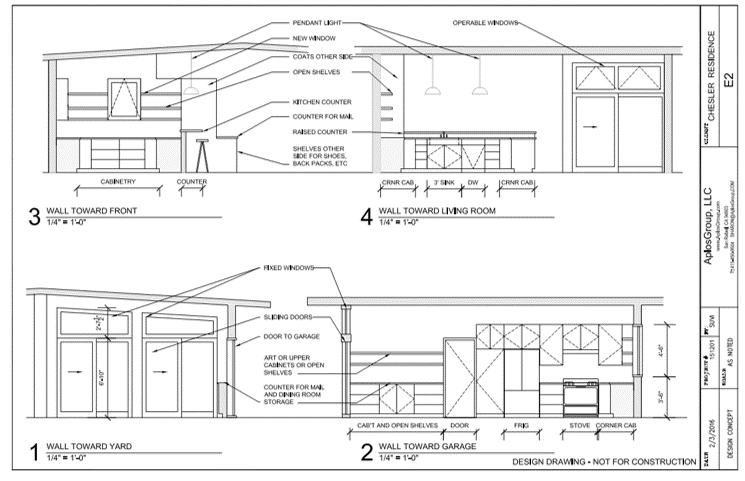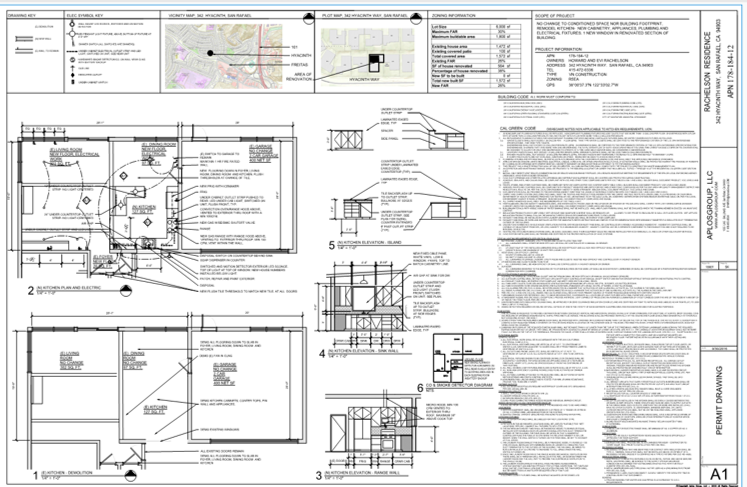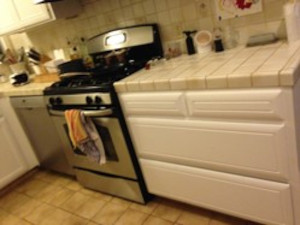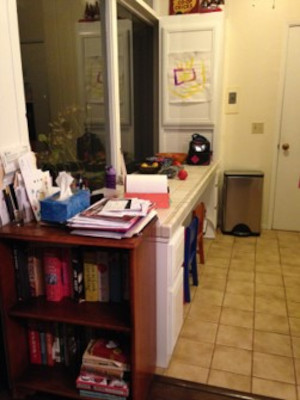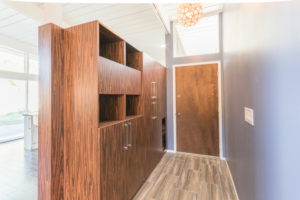Most clients come into a design project with little idea of how the design process works. But armed with a basic understanding of what to expect, you may find it easier to plan and make decisions as your project takes shape.
Of course, every architect works a little differently, but the overall design process tends to be similar.
As an example of how we work, we’ll look at the case of a major kitchen remodel of a Marin County Alliance home. (Alliance homes are similar to Eichlers, with a mid-century modern aesthetic, open-plan designs and an emphasis on indoor/outdoor living.)
The Design Process
Project Brief
When a young couple, both professionals, with two children came to us with a desire to make the kitchen part of the living space in their Alliance home, they took advantage of our free one-hour consultation. We used the time to determine if their proposed project needed an architect and if AplosGroup might be the right one for the project.
Onsite Assessment and Needs
Both proved to be true, so we moved forward with an onsite assessment of the actual kitchen and what would need to happen to make the modifications the clients wanted. They were ready with a list of elements they felt needed to be included to make it all work:
- A place for the kids to have an eating counter while the parents cook,
- Tough surfaces to stand up to the kids’ activity,
- Windows, doors or skylights to bring in the natural light,
- Enough room for both parents to work in the kitchen at the same time,
- A modern, clean feel.
Dreaming and Budgeting
After an inspection of the current kitchen configuration, and a thorough discussion of the clients’ design ideas and dreams, it was time for discussion about the budget. This pre-design phase is essential to document all the possibilities, ideas and any restrictions that can impact a project. Once we narrowed down the ideas to what was feasible given the budget, we created a tentative schedule for things like approval of the drawings, permit considerations, and identifying any team members who might be needed to complete the project.
Schematic Design
Next came the schematic design phase. This is when the clients’ ideas and dreams were visualized, and we created several design ideas for their consideration.
Design Development
After a careful review of their options, the couple chose Concept 1.
The design’s configuration took shape with the floor plan and elevation drawings. In this instance the couple had already decided the character of the room needed to let in light, be functional, spacious enough to accommodate two cooks in the kitchen and reflect a modern, clean concept with finishes durable enough to withstand the years of use by the children.
Contract Documents & Permitting
We then put together a “fully cooked design” incorporating code and building department requirements and, of course, the clients’ preferences.
This was turned into a set of documents that went to the local building department for review and permitting.
If there had been any permitting concerns, we would have addressed them and resubmitted an amended design, but fortunately, our first permit set received the go-ahead from the building department.
Construction
Breaking ground on the construction phases is always exciting and a little nerve-wracking for the clients. What if there’s a problem? What if there’s a delay? What if one of our desired materials doesn’t show up?
As with most projects, this one went smoothly. Almost every job encounters small unforseen issues, so at AplosGroup, we consider overseeing the construction phase and essential part of our job. It allows us to communitcate any issues and offer efficient solutions to any problems right away.
Finishing
The clients were delighted when the project was finished and it was time to occupy their beautiful new kitchen.
Before
After


